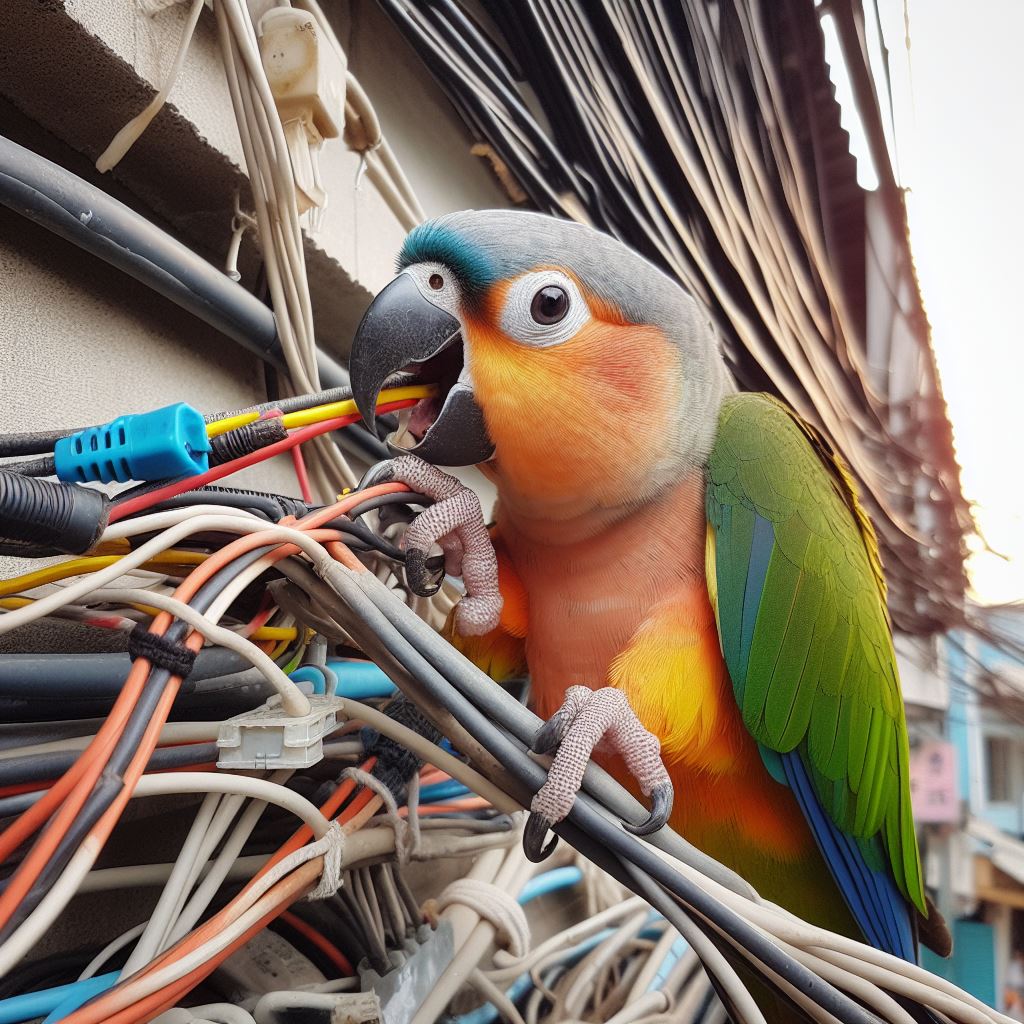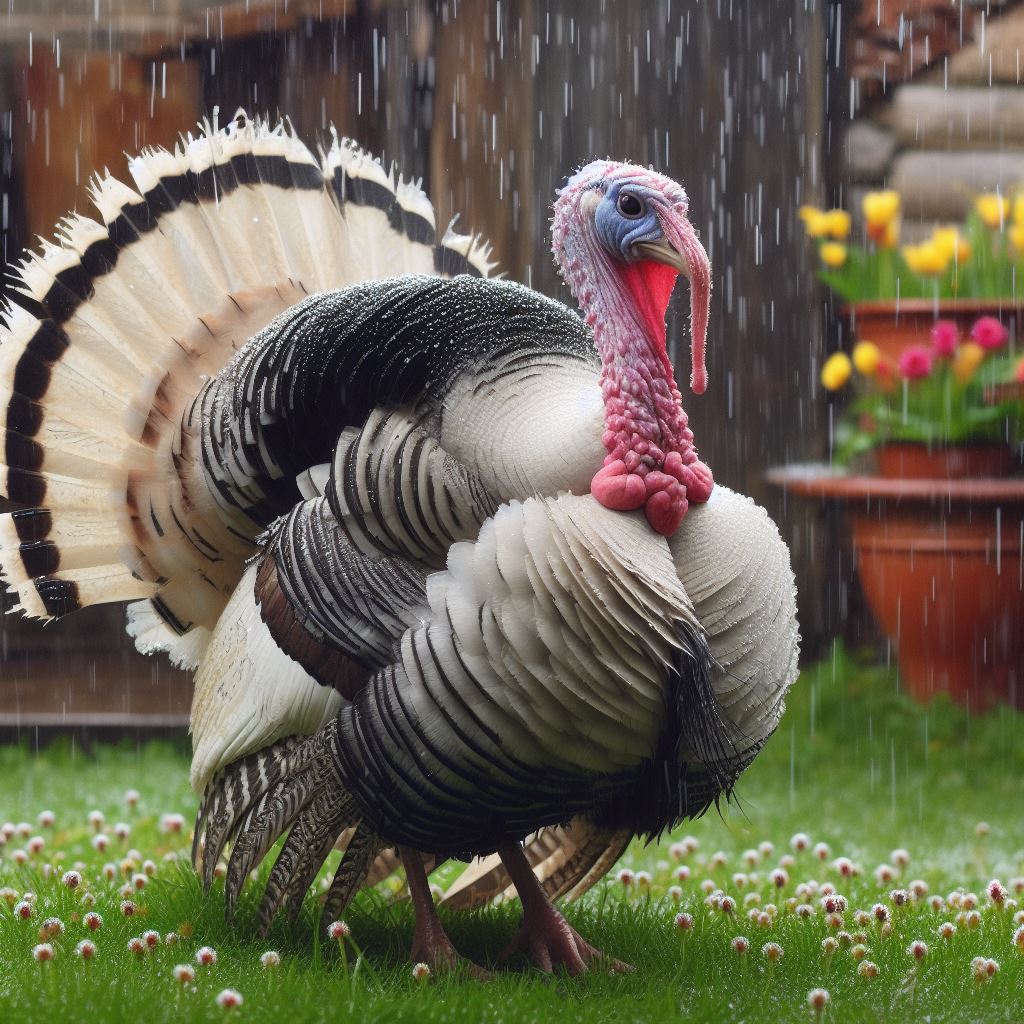The 10 Birds With the Lowest IQs: What Is The Dumbest Bird In The World

Table of content:
Birds have a reputation for being pretty smart animals. Many species use tools, solve complex problems, and display other signs of high intelligence. However, not all our feathered friends are created equal when it comes to brainpower. Some birds seem to completely lack common sense and basic problem-solving abilities.
After scouring bird breeding forums, avian cognition studies, and awkward home videos, we’ve compiled a list that could be considered the dumbest bird in the world. Read on to learn which bird species seem to have gotten the short end of the IQ test!
 1. Domestic Turkeys
1. Domestic Turkeys
The domesticated turkey is a poulter favorite, bred for its large, tasty meat. Unfortunately, intense breeding has led to a bird that is not very bright. Turkeys are prone to staring at the sky for minutes at a time, even when it’s raining, leading to them drowning from the water filling up their nostrils and mouths. These birdbrained behaviors showcase why turkeys top our dumbest birds list.
Turkeys also have trouble recognizing predators, leaving them vulnerable to attack. Male turkeys can even become dangerously fixated on other males, attacking their reflection to the point of exhaustion when they see it. Overall, turkeys seem to lack basic survival instincts, earning them a reputation as being the most unintelligent fowl in the avian world.
2. Dodos
The extinct dodo bird was endemic to the island of Mauritius before it went the way of the dinosaurs. One reason this foolish fowl met its demise? Its extreme lack of wariness towards predators. Sailors reaching Mauritius found dodos to be overly inquisitive, oddly fearless creatures.
Dodoes had evolved for thousands of years without natural predators, leaving them blissfully unaware of mammalian dangers. Their resulting stupidity and avian absurdities lead to them being easily killed off by humans and other newly introduced predators. Now the only remaining dodos are skeletal museum pieces and animated gifs serving as icons of foolishness.
3. Geese
Geese might seem harmless as they paddle about ponds, but these birds can become quite troublesome with their goose gaffes and lack of social awareness. For one, geese tend to become overly territorial towards humans as they nest, sometimes chasing and nipping at passersby who get too close. Even when not nesting, geese may confront unfamiliar animals as large as horses, heedlessly putting themselves in danger.
Geese also frequently bring their vulnerable goslings too close to roads or drown them by leading them into large bodies of water. Additionally, domestic geese kept as pets often overeat to the point where their liver stops functioning properly, leading to a diseased state known as “fatty liver.” For these reasons, geese can be considered bird brains lacking in basic reason and judgment abilities.
4. Peafowl
The peacock may have flashy plumage, but its hens (peahens) have limited cognitive abilities. Peahens have been found to sometimes mate with peacocks that have already died, showing very poor mate assessment abilities. Researchers have noted this birdbrained behavior occurs more frequently in places with higher peafowl densities, indicating that peahens struggle to remember and recognize individual peacocks.
In one tragic instance, a peahen was documented trying to mate with a dead peacock for an incredible 45 minutes. The foolish hen made over 400 mating attempts with the decaying corpse before finally giving up. While peacocks invest effort in their ornate tail displays, peahens seem to have invested much less brainpower into their evaluation and decision-making processes.
5. Chickens
As a prey animal, chickens have evolved to have high visual acuity, detecting even subtle movements from a distance. However, they seem to lack judgment in how they respond to perceived threats. Their reactions are often described as “panic first, think later.” This leads chickens to stampede in reaction to benign stimuli like a flapping tarp or sudden sunlight. Their feathered foolishness causes pile-ups, tramplings, and broken legs in confined chicken coops.
Free-range chickens also routinely eat odd non-food items like small stones, nails, and glass. Roosters frequently fight each other to the death over territories and flock dominance. Baby chicks may even get distracted while drinking water and stupidly drown as a result. From their chicken chuckleheads to mob mentality flaws, chickens seem to lack basic common sense and reason.
 6. Emus
6. Emus
Emus are Australia’s large, flightless birds. They can run at 30 mph speeds and deliver powerful kicks with their muscular legs. Despite these impressive physical abilities, emus display many moronic behaviors and an overall lack of intelligence.
In the wild, emus are known to blunder blindly into human establishments and wreak havoc. This may involve crashing into shops, toppling over consumer goods, and squabbling with patrons. Their dangerous mix of stupidity, territorialness, inquisitiveness and sheer size leads them to harm property, threaten public safety and disrupt human establishments.
Even when raised in captive emu farms, these big bird birdbrains still have erratic tendencies. Their behaviors range from uprooting fence posts to stomping on their eggs to even attacking shiny hubcaps on vehicles, leading Australian authorities to issue public warnings about emu foolishness.
7. Flamingos
Flamingos may attract attention with their bright pink hues, spindly legs and unusual inverted bill, but they seem to lack sophistication when it comes to their social displays. Their signature courtship ritual consists of groups of birds standing in messy circles, bobbing their heads erratically while emitting loud honking grunts. This is followed by the mates noisily spinning in circles while shaking their heads from side to side.
Observers have likened flamingo group courtship to a group of intoxicated partygoers. The displays seem to entirely lack rhythm, nuance or skill. Flamingos appear to simply numb their nerves with their raucous cacophony as they prepare to breed. Beyond these disorderly rituals, flamingos display few signs of intelligence, leading scientists to categorize them among avian airheads in the animal kingdom.
8. Pigeons
Pigeons may seem ubiquitous in cities worldwide, but these birds are quite challenged when confronted with basic survival obstacles. Beyond notoriously pigeon pea-brains that cause them to bobble their heads while walking, pigeons struggle with identifying food from refuse when scavenging human waste.
Researchers have observed that pigeons routinely try to choke down inedible non-food items like cigarette butts, causing them to gag and vomit repeatedly. They also tend to fly into stationary objects when startled or chased by larger birds. Beyond this, pigeons have difficulty building sturdy nests, frequently abandoning eggs and squabs that roll out of flimsy nests placed in precarious locations. Their consistent ineptness shows a distinct lack of avian aptitude.
9. Ostriches
As the world’s largest bird species, ostriches have distinctive adaptations like long legs that can sprint at high speeds and sharp claws for defense. However, ostriches seem to lack basic behavioral adaptations to protect themselves. When scared, these huge birds are prone to burying their heads in the sand or dirt. This leaves their bodies exposed rather than hiding their large form.
Mother ostriches also frequently abandon their eggs before they hatch, leading to mortality rates of 95 percent or higher in some regions. And despite their formidable size and power, ostriches typically flee at the site of potential predators rather than defending themselves or their offspring. While ostriches might resemble creatures from the prehistoric past, their ridiculous behaviors clearly show they have yet to evolve higher avian intelligence.
10. Parrots
With their impressive talking and mimicry skills, parrots are generally considered to be one of the most intelligent bird groups. However, some specific parrot behaviors point to a distinct lack of common bird sense. In particular, parrots showcase stupidity with their unfortunate habit of continuously chewing wood objects in their environment. While beaks continuously grow and require filing down, parrots are obsessed with gnawers of wood, tree branches and furniture.
This obsessive, neurotic nibbling frequently leads captive parrots with ample chew toys to dangerously chew electrical wires, wood sidings and toxic furniture paints and varnishes, leading to injury, sickness and untimely death. In addition, parrots tend to bond closely with specific owners. In the case of a human caretaker’s death, parrots may then repeatedly self-mutilate, pluck their own feathers or exhibit signs of prolonged depression and grieving at their loss. For these neurotic behaviors that require extensive environmental safety-proofing, parrots round out our list of the world’s dumbest birds.
FAQs What is the Dumbest Bird
What are some examples of foolish bird behavior?
Birds often exhibit birdbrained behavior and avian absurdities like geese leading their goslings into danger, emus attacking their reflection, or parrots self-mutilating due to depression. Some specific feathered fool’s activities include turkeys drowning from looking up at the rain too long, chickens stampeding over small threats, flamingos having chaotic mating dances, and pigeons eating inedible garbage.
Which birds have the lowest IQ?
As prey animals, many bird species prioritize wariness over intellect. However, some birds seem exceptionally unintelligent due to exhibiting almost no natural survival instincts or reasoning abilities. Birds with remarkably low IQs likely include domestic turkeys that are easily killed by predators, dodos that have no fear of humans, and ostriches that bury their heads when scared.
Why do birds act so strangely sometimes?
Birds have evolved some foolish flocking, birdbrained nesting, and ridiculous raptor behaviors over time. As long as these odd behaviors don’t stop them from mating and surviving, they may get passed on. Some theories on bizarre bird antics include: inbreeding depression reducing mental capacity, evolutionary quirks being naturally selected, or brains simply being overloaded in large communal courting rituals.
Can I keep a dumb bird as a pet?
Certain silly squawking species like chickens, geese, and pigeons can potentially be kept as pets if given the proper care and attention. However, their bird oddities mean owners must bird-proof homes against common instincts like repetitive egg laying, aggressive territorial displays, and consuming inedible objects. Be prepared for behaviors like repeatedly self-injuring and prolonged grieving in the case of a bonded owner’s death.
Conclusion
While avian species have evolved impressive physical traits for survival over millennia, intellectual abilities seem to be more hit or miss across bird groups. As we’ve covered here, certain birds showcase distinct lapses in judgment, decision-making, adaptability and basic common sense. Chalk it up to birdbrained quirks, evolutionary trade-offs, or just mysteriously deficient neurons, but some feathered flocks drew the short straw when it came to bird brains.
So next time you see birds exhibiting questionable behavior like turkeys drowning in the rain, flocks of shrieking flamingos shaking their tail feathers or neurotic parrots chewing electrical cords, remember that they can’t necessarily help it. The term “bird brain” exists for a reason after all! Nature’s flying phenomena have their flaws and foolish tendencies just like any other creature.
Welcome. I’m Adreena Shanum, the proud owner of this website, and I am incredibly passionate about animals, especially poultry. I founded adreenapets.com as a labor of love, stemming from my desire to share my knowledge and experiences with poultry enthusiasts worldwide.




